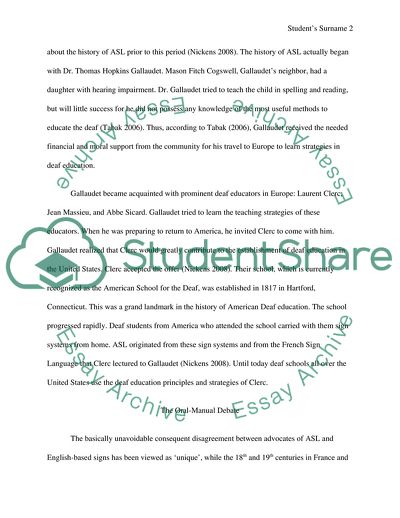Cite this document
(History of the American Sign Language Research Paper, n.d.)
History of the American Sign Language Research Paper. https://studentshare.org/education/1767028-the-history-of-american-sign-language-in-depth-i-want-the-paper-to-discuss-the-battle-between-oral-communications-versus-american-sign-language
History of the American Sign Language Research Paper. https://studentshare.org/education/1767028-the-history-of-american-sign-language-in-depth-i-want-the-paper-to-discuss-the-battle-between-oral-communications-versus-american-sign-language
(History of the American Sign Language Research Paper)
History of the American Sign Language Research Paper. https://studentshare.org/education/1767028-the-history-of-american-sign-language-in-depth-i-want-the-paper-to-discuss-the-battle-between-oral-communications-versus-american-sign-language.
History of the American Sign Language Research Paper. https://studentshare.org/education/1767028-the-history-of-american-sign-language-in-depth-i-want-the-paper-to-discuss-the-battle-between-oral-communications-versus-american-sign-language.
“History of the American Sign Language Research Paper”. https://studentshare.org/education/1767028-the-history-of-american-sign-language-in-depth-i-want-the-paper-to-discuss-the-battle-between-oral-communications-versus-american-sign-language.


